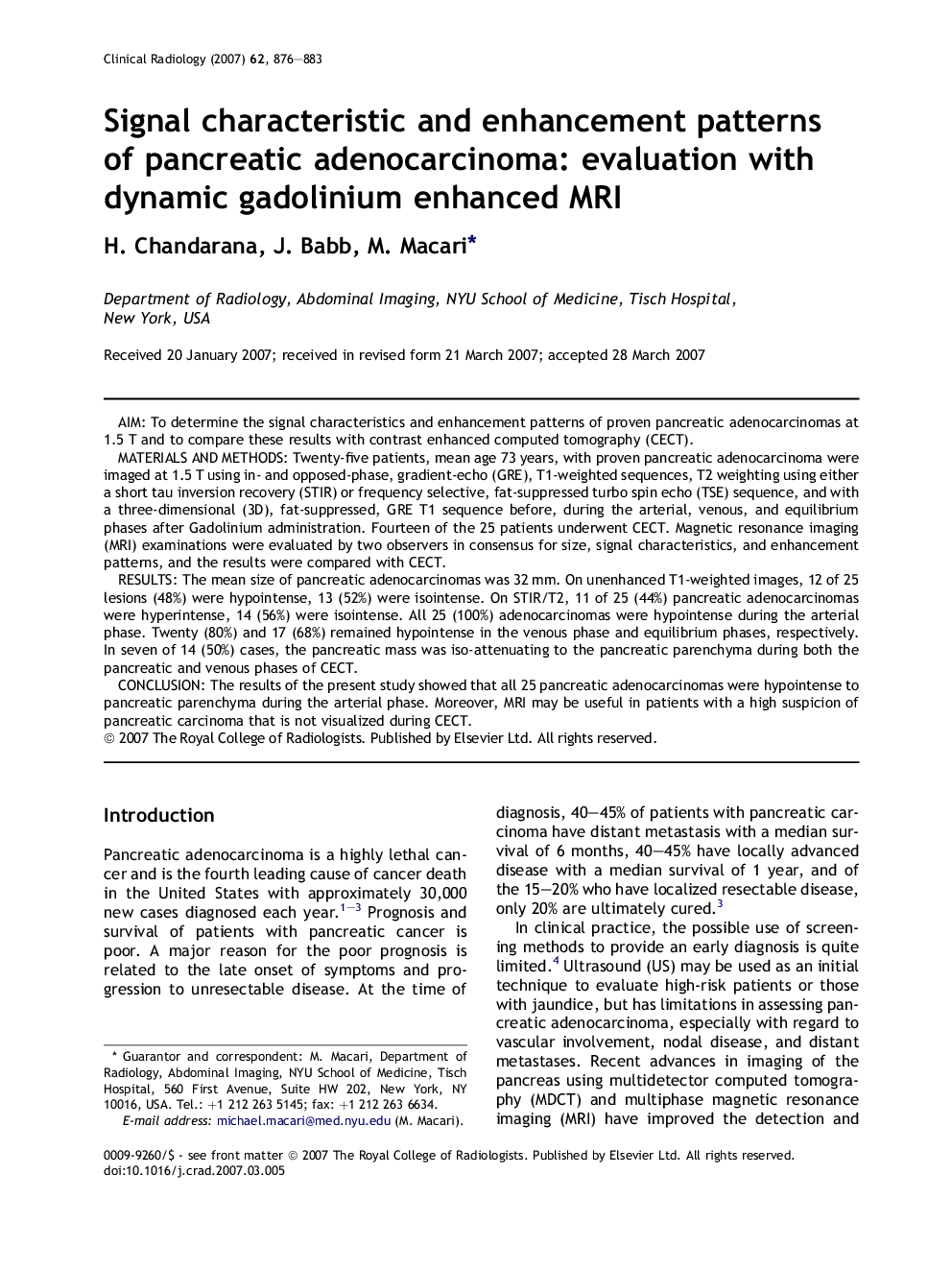| Article ID | Journal | Published Year | Pages | File Type |
|---|---|---|---|---|
| 3983385 | Clinical Radiology | 2007 | 8 Pages |
AimTo determine the signal characteristics and enhancement patterns of proven pancreatic adenocarcinomas at 1.5 T and to compare these results with contrast enhanced computed tomography (CECT).Materials and methodsTwenty-five patients, mean age 73 years, with proven pancreatic adenocarcinoma were imaged at 1.5 T using in- and opposed-phase, gradient-echo (GRE), T1-weighted sequences, T2 weighting using either a short tau inversion recovery (STIR) or frequency selective, fat-suppressed turbo spin echo (TSE) sequence, and with a three-dimensional (3D), fat-suppressed, GRE T1 sequence before, during the arterial, venous, and equilibrium phases after Gadolinium administration. Fourteen of the 25 patients underwent CECT. Magnetic resonance imaging (MRI) examinations were evaluated by two observers in consensus for size, signal characteristics, and enhancement patterns, and the results were compared with CECT.ResultsThe mean size of pancreatic adenocarcinomas was 32 mm. On unenhanced T1-weighted images, 12 of 25 lesions (48%) were hypointense, 13 (52%) were isointense. On STIR/T2, 11 of 25 (44%) pancreatic adenocarcinomas were hyperintense, 14 (56%) were isointense. All 25 (100%) adenocarcinomas were hypointense during the arterial phase. Twenty (80%) and 17 (68%) remained hypointense in the venous phase and equilibrium phases, respectively. In seven of 14 (50%) cases, the pancreatic mass was iso-attenuating to the pancreatic parenchyma during both the pancreatic and venous phases of CECT.ConclusionThe results of the present study showed that all 25 pancreatic adenocarcinomas were hypointense to pancreatic parenchyma during the arterial phase. Moreover, MRI may be useful in patients with a high suspicion of pancreatic carcinoma that is not visualized during CECT.
